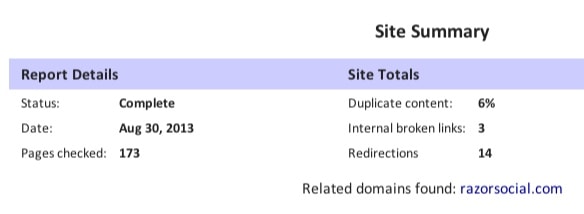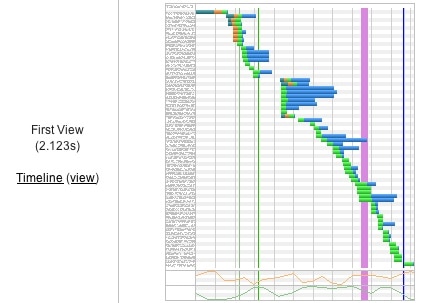A regular website analysis / review is really essential. Have you gone through a website checklist to review your website in the last few months? or maybe it’s been years?
Issues found could have serious implications to your performance online. So it’s essential to do a regular review.
A Geek is a slang term for a techie person. Someone that’s more comfortable reading a Google analytics book than watching a soap on TV. Well for this website checklist you don’t need to be a geek but you might need a geek to help resolve some of the issues.

This is not an exhaustive website checklist. It focusses on some important elements you need to consider for your website to-day.
1. Check support for mobile
When you look at Google analytics under the mobile section you’ll likely see that around 20% of your traffic or more comes from a mobile device. If your visitors use a mobile device they need to have a good experience otherwise they may not come back.
Check Google analytics under the overview section to see what traffic comes from a mobile device. If you find this is 15% or more then you really need to do something asap.

If you have a blog your developer is likely to recommend that you adapt your website to make it ‘responsive’. This means that your website will adjust in layout to suit the device.

Read this for more detail: How to support mobile on your website
2. Resolve basic SEO issues
It’s great if you’re in a position that your website and content is so popular you don’t have to consider optimizing your content. But if you’re not Seth Godin you need to ensure consider Google when writing your content!
An initial basic SEO review is important.
a). Every new blog post contains relevant keywords in your page name
b). You have unique title – The title is a tag read by Google and it uses it for indexing. It’s extremely important to have keyword focussed unique titles for every post.
c). Your blog post name is listed as Heading 1 in your content. This is sometimes the case but not always, again this is important for Google.
d). Check your domain rank. The domain rank is a proprietary ranking system that rates your website out of 100. If it’s very low then you know you have some work to do. You’ll need to start building high quality links back. Opensiteexplorer allows you to check your domain rank.
e). Check where you are in search results based on the keywords you are targeting and compare with your competitors. There are many tools you can use. For example, there is a Firefox plugin called Rank Checker which is free.

f). Review to see if you are trying to target keywords you don’t have a chance to rank on. It’s great to get some social shares when you initially launch but what is going to bring traffic back to this post on an ongoing basis. You got it…. Google!
3. Check for duplicate content
It’s difficult to stop other people taking your content and putting it on their site. But that’s not generally the duplicate content issue. Google will check to see the publish date and give you credit as you published the content first.
But what is normally a problem is duplicate content on your own site. One tool that is useful to check duplicate content on your site is siteliner. Another advantage of this tool is that it identifies any broken links on your site also. Broken links effect your Google ranking so make sure to resolve these.

Duplicate content is a big problem for a lot of sites so you may need to make some changes to your website to remove duplicate content.
4. Check the speed of your website
Speed of your website is an increasingly important factor. This is particularly important because this is one of the criteria that Google uses when it ranks a site.
To optimize your performance you may need to reduce image sizes, remove invalid content loaded and much more. Recently we implemented a CDN on your site. A CDN is a content distribution network. This means that the content is automatically made available at different hosting centre around the world so that when a user browses through content it is served to them at from the nearest hosting provider.
Implementing this CDN using MaxCDN halved our download speeds immediately. Test out your page speed using http://www.webpagetest.org.

In the example above the page download speed of the home page is 2 seconds which is acceptable. If you see 10 seconds or more then you really need to start to optimize. Ideally it’s 2 seconds or even less.
5. Check the speed of your mobile website
Google recently announced they will introduce penalties for a slow mobile website. So this is not something you should ignore.
Google even provide you a tool which compares performance of your mobile site compared to your desktop.
Check out the page speed insights tool and run this for your website. In the image below you see that we rate 76 out of 100 for mobile and 86 out of 100 for desktop which shows that we are doing ok but could make some improvements to the mobile site.
If you score really low for either it’s essential that you resolve this.

In the image above the green icons is good, orange is ok and red is something you need to resolve as soon as possible.
6. Remove Plugins you don’t use or are insecure
Depending on the blogging platform you use you’ll probably have plugins that add additional functionality on to your site. Plugins can be a great way of adding additional functionality to a site for low cost and sometimes free. But not all plugins are perfect.
If you have plugins you no longer use then remove them.
Review your existing plugins with your developer to check if there are any security concerns. This could be that the plugin is just unsecure and if this is the case it needs to be removed. It could also be that the plugin is out of date and there are security issues that have been resolved. If this is the case then you need to update it.
Be careful of installing plugins. They are easy to install but can also easily break your website or open up security issues.
7. Check your backups
When was the last time you tried to build your website and your content from all your backups? If you haven’t done this then assume that this won’t work. The reason I say this is that I’ve been involved in technology for many years and thinking you are doing a backup of everything means that you are probably not.
Ask your developer to rebuild your site from your backups on a separate machine. Prepare for disaster recovery before it happens.
It is highly likely that when you rebuild your backup you will have some issues. Missing files, images etc.
If you are on WordPress and want to do backups Vaultpress is a good solution.
8. Resolve Google Webmaster Tool Issues
Google webmaster tools is frequently ignored but it shouldn’t be. When Google crawls through your site and finds problems they don’t email you to tell you about them. Instead they log them in Google webmaster tools and then give you access to view them.
Some of the issues you can resolve yourself but others may need some technical help.
Here’s an example of the type of issue that might appear. In the example below it displays 85 pages not found. This type of error would need to be investigated.

9. Review your conversion statistics and improve
It’s great having lots of interesting content but when visitors come to your site you want them to take action. This could be to sign up to an e-mail list, sign up for a demo or just buy your product!
It’s important to have goals set up within Google analytics and track the conversion on your goals. For example if your goal is email conversion you can see what channels bring the best conversion rates.
Based on this you need to work out how you can improve conversion.
Here are 2 articles to review:
How to analyze social media traffic in Google analytics
eMail Marketing tools to increase conversion
10. Review Your Analytics
As well as reviewing your conversion rates within analytics there are other areas you will need to consider, for example:
Traffic trend – it it going up or down
Traffic sources – where is your traffic coming from.
Keywords Traffic – What traffic you get from keywords and are these relevant keywords. This may identify opportunities to reduce on irrelevant traffic and increase relevant traffic.
Bounce Rate – Are people engaging on your site or leaving immediately on the same page as the one they entered on.
Goals – Have you set up goals and what are your conversion rates. You should be able to say what your conversion rate is from traffic coming from Facebook and how is that different than twitter.
11. Tighten up other security issues
You really don’t want to be exposed to hackers on your site. Some of the other areas you may review are:
1. Password – Changing your password on a regular basis is essential.
2. Remove Admin users – When you have ‘admin’ as a username for login that is the first name that is tried by hackers. If they have the username then all they need is the password. So don’t make it too easy and make sure you have no ‘admin’ super user. You should create another super user instead.
3. Malware monitoring and cleanup – At times you can end up with viruses on your website that you’ll need to clean up. There are some great tools out there to help. Check out sucuri which provides protection and cleanup for malware and also provides a free checkup on your site. See here.
4. Delete temporary users – Sometimes you give people temporary access to your website so it’s useful to remove this temporary access.
12. Check internal linking between blog posts
It’s very useful to get external links from other websites to your content but internal linking is also useful. When you create a new blog post you may link to older posts but generally you don’t go back and link the older posts to the newer ones! This is very useful to do. Only link when it’s relevant but do link!
13. Code Review
We’re really starting to get geeky here! As your website/blog develops your developer may add a lot of additional code for the functionality you require. Some of this could be good and some could be really bad. It could open up security issues, slow down your site or create a potential mess for you in the future. So a code review every so often is no harm at all.
14. Does everything still work!
You probably don’t need your geek to do this but it’s something you probably have not done in ages. Have you checked that email subscription does work correctly, are all contact forms working correctly, can you share your posts using all the social sharing icons? Over time these things break so do a basic checkup!
Summary
Taking a step back to review your website every so often is really essential. There is one thing I know for certain is that if you do a full review you will find problems. Some will be serious and some no so serious. So when was the last time you went through a similar website checklist? Who can you get to give you some help?
Note: Always test out changes on a test site before deploying to your live environment!!!
As always, we would love to hear your feedback.



